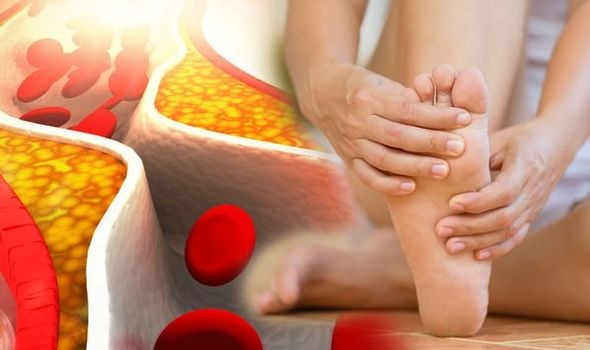Heart Health At Risk When High Cholesterol Levels Affect The Legs and Feet This Way

Heart Health At Risk When High Cholesterol Levels Affect The Legs and Feet This Way
It’s often during the quiet of the night that symptoms of blocked arteries become more apparent, particularly in the legs and feet.
9 May 2024
By Ishika Kumar
The Underlying Dangers of High Cholesterol
Cholesterol is a waxy substance necessary for the creation of new cells and hormones. Essential for healthy bodily function, its excess, however, poses significant risks, particularly to heart health. High levels of cholesterol can lead to the development of atherosclerosis, which is a condition where arteries are clogged, reducing blood flow and increasing the risk of heart diseases, like heart attack.
The Nighttime Signals of Artery Blockage
It’s often during the quiet of the night that symptoms of blocked arteries become more apparent, particularly in the legs and feet. This is due to cholesterol’s tendency to accumulate in the heart arteries, impeding proper blood flow. Recognising the symptoms early can be extremely crucial.
Key Symptoms Include:
1. Pain and Discomfort in Legs and Feet: Often manifesting during physical activity or at night, this can be a sign of claudication caused by narrowed arteries.
2. Numbness or Weakness: A lack of blood flow can cause the legs and feet to feel weak or numb during periods of rest.
3. Persistent Cold Feet: Even in a warm environment, decreased circulation can leave feet cold.
4. Swelling: Fluid build-up, due to poor circulation, often worsens at the end of the day and can signify heart blockages.
5. Skin Colour Changes: A bluish or purplish tint to the skin on the legs and feet can indicate severe circulation issues.
6. Slow-Healing Sores: Wounds that do not heal promptly on the lower limbs might suggest significant artery blockages.
7. Hair Loss on Legs and Feet: Reduced hair growth or hair loss in these areas can also be a symptom of blocked arteries.
Tackling High Cholesterol
If you experience any of the aforementioned symptoms, especially at night, it’s vital to consult a healthcare provider. Early detection and treatment of high cholesterol are critical in preventing severe heart-related complications. Lifestyle changes such as maintaining a balanced diet, regular physical activity and consistent health check-ups are fundamental in managing cholesterol levels.
Understanding Peripheral Artery Disease (PAD)
Peripheral artery disease is a common, yet serious condition characterised by narrowed arteries which reduce blood flow to the limbs, particularly the legs. This condition is primarily caused by atherosclerosis, the buildup of fatty deposits in the arteries.
Symptoms of PAD Include:
1. Claudication: Muscle pain or cramping in the legs triggered by activity and relieved by rest.
2. Temperature Differences: Coldness in the lower leg or foot compared to the other side.
3. Numbness or Weakness: These symptoms can indicate severe blood flow restrictions.
4. Changes in Skin Appearance: Shiny skin, colour changes and slow toenail growth are indicative signs.
5. Non-healing Sores: Persistent sores on the feet or legs are severe symptoms requiring immediate medical attention.
When to Seek Medical Help
Symptoms like leg pain, numbness and the physical changes mentioned should prompt an immediate visit to a healthcare provider. It’s crucial to catch PAD early to manage symptoms and prevent complications such as critical limb ischemia, which could lead to amputation or increase the risk of stroke and heart attack.
Preventative Strategies for PAD
1. Avoid Smoking: Smoking cessation is critical.
2. Manage Blood Sugar and Cholesterol Levels: Keeping these within recommended ranges is essential.
3. Healthy Diet and Exercise: Adopt a diet low in saturated fats and engage in regular exercise after consulting with a healthcare provider.
4. Regular Check-ups: Monitoring blood pressure and overall health can help catch PAD in its early stages.
Both high cholesterol and peripheral artery disease are interconnected conditions that significantly affect circulation and overall health. Awareness and proactive management of these conditions can lead to better health outcomes and a higher quality of life. Recognising the signs, especially those that manifest subtly at night, is key to preventing the severe consequences of these widespread health issues.










